Blog Archives
Prepare your vehicle for the New Year with Trust My Garage
With the imminent arrival of 2021 it’s important to get your vehicle ready for the New Year – but what steps can you take to ensure you’re motoring happy over the next 12 months? The Trust My Garage blog is here to help! Read on to find out what you need to know.
MOT
This year has been an unprecedented experience for almost everyone, including motorists. For safety, the DVSA began to issue six-month MOT extensions for vehicles due an MOT between April and the end of July. The extension means that many vehicles due their MOT over the summer will now been condensed into the last few month of 2020, creating much longer waiting times for MOT appointments.
The extension was entirely optional, and you were still able take your vehicle to your local Trust My Garage member garage at its normal MOT time, which is usually in line with its registration, if you want to do so. This may be helpful if your key dates, such as MOT, tax renewal and insurance renewal, are due at the same time, as it will be easier to remember.
The DVSA have predicted a 24 per cent increase in demand for MOT’s in December and a 45 per cent increase in January, so a great way to prepare for the New Year is to ensure your test is booked in plenty of time ready for its due date and avoid your car being unusable due to an expired MOT.
To check when your vehicle’s MOT test is due, you can visit https://.gov.uk/check-mot-history. All you need is your vehicle’s registration number!
Tax
About a month before your road tax expires the DVLA will issue you with a V11 Vehicle Tax Reminder, containing the information you need to either renew your tax online, via telephone or at a Post Office branch. Your V11 will also tell you the date your current road tax period will expire.
You can check the status of your road tax or renew it online via the Gov.uk website. Driving without road tax will result in a DVLA-imposed fine of £80, which can be reduced by half if paid in 28 days. However, it could result in a fine of up to £1,000 or five times the annual road tax fee if the case goes to court. Even if your vehicle is not being driven but is parked on a public road, if you’ve forgotten to pay tax, it could be clamped or even impounded!

Insurance
It’s illegal to drive a vehicle on a road or in a public place without at least 3rd party insurance – and even if the vehicle itself is insured, if you’re not correctly insured to drive it you could get penalised. The police could give you a fixed penalty of £300 and 6 penalty points if you’re caught driving a vehicle you’re not insured to drive.
If the case goes to court you could get :
- an unlimited fine
- disqualified from driving
The police also have the power to seize, and in some cases, destroy the vehicle that’s being driven uninsured. You can check your vehicle insurance renewal date with your insurance provider, and you can do a quick check on whether your vehicle is insured here: https://ownvehicle.askmid.com/
Car maintenance
It’s important to make sure your vehicle is running at its best ready for the next year, so take time to ensure your motor isn’t displaying any warning lights on the dashboard, your fluid levels are topped up as needed and your lights are working clearly with no damaged or broken bulbs.
Our “What to do when… your vehicle needs some TLC” post covers the basics you need, in detail, to make sure you’re driving into 2021 with all cylinders firing.
The other posts in our ‘What to do when…’ series can also provide some further tips and insight across many areas of motoring and vehicle maintenance to help you ensure your motor is running at its best! You can check out our posts in the series here.

Tyres
The tread of a tyre refers to the rubber on its circumference that makes contact with the road or ground. The legal limit for minimum tread depth in the UK is 1.6mm across the central three-quarters, however it is recommended to keep your tyres at 3mm or above for optimum grip. Drivers who fail to comply with the regulations face a fine of up to £2,500 and three penalty points for each illegal tyre.
The ‘20p test’ is a quick way to check the tread depth. Place a 20p coin into the main tread grooves at three points across the tyre and then repeat around its circumference. If the outer band of the 20p piece is visible, the tyres may be unsafe or illegal and need to be checked by a professional garage or tyre specialist.
You can check and correct your tyre pressure at most UK petrol stations using a pay-per-use air and water station, or you can purchase your own tyre pressure gauge – the choice is yours.

If you aren’t sure what pressure is correct for your vehicle’s tyres you can refer to your Owner’s Manual. Details should be provided in either/both BAR and PSI, and you can adjust your pressures to the recommended figure. Often a vehicle’s tyre pressure information is also provided on the interior frame of the front passenger or driver’s door, and sometimes inside the fuel flap, so be sure to check there if you need a quick reference point as well.
Find out more in our “What to do when… you need to check your vehicle’s tyres” blog post.
Finding a local garage
If you’re looking for a professional local garage to help you, you can find a local CTSI approved Trust My Garage member by visiting the Trust My Garage website’s ‘Find a Garage’ map! You can even read reviews from other motorists about the members in your area to help you decide which garage is right for you. Try it out here:
More about Trust My Garage
Trust My Garage is a collection of Britain’s trusted local garages – each one different and all dedicated to the highest standards of skill and personal service.

Every garage in Trust My Garage are members of the Independent Garage Association, which is part of the RMI, one of Britain’s oldest motor trade organisations. IGA members are true professionals who have to comply with a strict code of practice.
Each and every customer of all Trust My Garage members can rely on using a nationally recognised brand to help you and your vehicle get the best value service for you and your vehicle.
How does coronavirus affect MOTs? Find out with Trust My Garage!
The ongoing coronavirus pandemic continues to affect the public in many aspects of daily life – whether you’re working from home, ordering take-aways instead of eating out, or exercising via a run instead of going to the gym, many people have had to make changes to their lifestyle.
Unlike the first lockdown, the MOT is one thing that hasn’t been affected by the second wave of COVID-19 restrictions; so, what can you do to ensure your car’s MOT status remains valid and roadworthy? Trust My Garage is here to help!

What is the MOT?
The MOT is a government-mandated test for vehicles to ensure they meet safety and roadworthiness standards, as well as environmental standards.
A new vehicle requires its first MOT test after three years, and then will need one every year after that. You cannot drive or park your vehicle on a public road if the MOT has run out, and you can be prosecuted if caught without a valid MOT.
The Gov.uk website states you must get an MOT for your vehicle by either:
- the third anniversary of its registration
- the anniversary of its last MOT, if it’s over 3 years old
The MOT checks many important parts of your vehicle, as shown here:

(source)
These checks ensure vehicles meet the minimum requirements for road safety and environmental legislation.
After a vehicle’s MOT test, it will receive a certificate stating whether it has passed or failed the MOT. You may get a list of ‘minor’ or ‘advisory’ problems to monitor or fix in the future.
If the vehicle has ‘dangerous’ or ‘major’ problems it will fail its MOT, and you will not be allowed to drive it until the problems are fixed. The fail will be noted in the vehicle’s MOT history and you will get a ‘refusal of an MOT test certificate’ from the test centre.
You can be fined up to £2,500, be banned from driving and get 3 penalty points for driving a vehicle that has failed its MOT because of a ‘dangerous’ problem.
Why was there an MOT extension in the first lockdown?
Due to the ongoing coronavirus pandemic and the national lockdown restrictions, some vehicles were granted a six-month MOT extension by the government to help protect the public and avoid the spread of COVID-19. It was also to help the many key workers that found it difficult to get their cars to a garage, to stay mobile and continue to provide the vital services they delivered.
The extension was not mandatory, and the Government still advised the public to have an MOT test for their vehicle if they felt it necessary at the original time their MOT was due. 2.1 million MOTs were still carried out in April and May, despite lockdown restrictions and the implementation of the MOT extension.
Does my car need a valid MOT during lockdown?
In short, yes. Regardless of any lockdown restrictions, your vehicle must always have a valid MOT. You can be fined up to £1,000 for driving a vehicle without a valid MOT, and unless your MOT date has been extended by the Government you must submit your vehicle for testing before the expiry of its current MOT.
To check your vehicle’s MOT expiry date, you can use the Gov.uk MOT check service. The service also lets you set up text reminders for your MOT due date and check if there are any manufacturer recalls issued for your vehicle. If there are any recall issues, you can find out more information about them with our “Vehicle safety recalls – what are they and how can they affect motorists?” blog post.
Where can I go to get an MOT test?
To conduct MOT tests, a garage (or dealership) must be a DVSA-approved MOT testing station. You’ll know if a premises is an MOT testing station by the display of the official logo:

Some service and repair garages also conduct MOTs, and some garages will only offer MOTs, so check which is best for you before booking in your test. If you purchased your vehicle from a branch of the manufacturer’s franchised dealerships you can also use their facilities for your MOT, depending on your preference.
Many Trust My Garage members offer MOTs as part of their range of services, so it’s always worth checking if there’s a member in your area! It’s simple to do, just head to our “Find a Garage” map and pop in your postcode! Try it out here:

You can check TMG members in your area by distance, number of reviews or star rating. You can also view their profile page to see what services they offer and even request more information directly from the garage. TMG member profile pages also provide direct contact information, so if you prefer a phone call you can contact a garage quickly and easily.
As for pricing, there’s a maximum amount MOT test stations can charge, depending on the type of vehicle. The maximum fee for a car is £54.85 and £29.65 for a standard motorcycle, and the fee is not subject to VAT.
How can I prepare my car for an MOT?
Once you’ve booked an MOT, you may want to take extra steps to prepare your vehicle during the pandemic.
Many motorists have taken to leaving Personal Protective Equipment (PEE) in their vehicle’s for convenience, such as face coverings and/or disposable gloves; make sure these are removed in advance of your MOT test so garage staff don’t have to touch them. Some garages have taken to reminding to customers at time of booking and again on the day of their visit to ensure any used PPE is removed from vehicles to ensure the safety of both staff and customers.
You may also want to clean your vehicle prior to it entering the garage. Our “Keep your vehicle germ-free with Trust My Garage” blog post has some great tips on how to keep the germs at bay!
Some garages are currently offering deep-cleaning services at an additional charge when you take in your vehicle, so if you’re interested in a professional clean you can discuss this with the garage to see if it’s an option they provide.
Once your garage visit is over and your MOT is passed successfully, you can put your PPE back in place and carry on motoring.
More about Trust My Garage
Trust My Garage is a collection of Britain’s trusted local garages – each one different and all dedicated to the highest standards of skill and personal service.
Every garage in Trust My Garage are members of the Independent Garage Association, which is part of the RMI, one of Britain’s oldest motor trade organisations. IGA members are true professionals who must comply with a strict code of practice.
Every customer of all Trust My Garage members can rely on using a nationally recognised brand to help you and your vehicle get the best value service for you and your vehicle.
If you want to find out more about Trust My Garage, visit our website, like us on Facebook and follow us on Twitter!

Trust My Garage – 5 years of Consumer Codes approval for independent garages
On 20th October, Trust My Garage celebrated its 5th anniversary of being a Chartered Trading Standards Institute (CTSI) approved Consumer Code – but what does that mean when you visit a TMG member garage? Read on to find out!
What is Trust My Garage?
Trust My Garage is a collection of Britain’s best local garages – each one different and every one dedicated to the highest standards of skill and personal service. All the garages in Trust My Garage are members of the Independent Garage Association. The IGA is part of the Retail Motor Industry Federation (RMIF), one of Britain’s oldest motor trade organisations.
Trust My Garage is not a third-party web-based intermediary that comes between you and your local garage. It is a Code of Practice for independent garages, approved by the CTSI’s Consumer Code Approval Scheme. This means there are no extra costs involved for you or your garage and you will always be able to contact your garage directly, enabling you to build a trusted relationship, allowing members to maintain their high quality and standards of workmanship and service.

What is the Chartered Trading Standards Institute (CTSI)?
The Chartered Trading Standards Institute (CTSI) is a not-for-profit membership organisation founded in 1881 to support and represent trading standards professionals in the UK and abroad.
CTSI’s vision is for the United Kingdom to prosper through fair and safe trade. Their Consumer Codes Approval Scheme (CCAS) aims to improve customer service standards by:
- The approval and promotion of codes of practice through code sponsors, approved by the CTSI
- Protecting consumers with higher levels of customer service. By using an approved trader you will have protection above and beyond your normal consumer law rights, including access to a clear complaints procedure and Alternative Dispute Resolution (ADR) service if you have a problem
- Allowing businesses to display the codes logo to reassure consumers

How does a Consumer Code work?
The CCAS is committed to promoting Codes of Practice, such as Trust My Garage, that meet their core criteria and have obtained CTSI approval.
By adhering to a Consumer Code, TMG members can display the CTSI Approved Code logo – which gives you confidence in the reputable standards of the business.
You should always look out for the CTSI approved code logo when searching for a local business, so you can be confident that any approved code sponsor you choose has a proven commitment to be honest and have higher consumer standards. Click here to find out more how the Consumer Code Approval Scheme can help you as a consumer.
You can read more on the official Trust My Garage CTSI code sponsor listing here.
How can I find a TMG member garage?
The easiest way to locate your nearest Consumer Code-approved TMG member is by using our “Find a Garage” map. You can simply pop in your postcode and your preferred mileage radius and all TMG members in your area will be displayed! Try it out here:
You can sort members by distance, best reviews and number of reviews so you can decide which garage you want to use. TMG member profile pages also provide contact information and tell you which services the business offers – so you can decide who is best for you and have all the information you need to contact your chosen garage at the click of a mouse!
If you’re looking for more information about Trust My Garage, you can head over to our website, TrustMyGarage.co.uk. We’re also on social media, so check out our Facebook and Twitter profiles to get the latest motoring news and updates straight into your social feeds!
Keep your vehicle safe and roadworthy with Trust My Garage
Rising road traffic volumes across the UK has the potential to lead to increased chances of an accident – but how can you keep yourself and your passengers safe and your vehicle roadworthy? Find out with Trust My Garage!
According to Department for Transport (DfT) statistics, in 2019 car traffic hit the highest-ever figure of vehicle miles driven – 278.2 billion miles! Add into this recent updates on how people use public transport due to the impact of coronavirus, and it’s easy to see why mileage is at an all-time high.
With an increased number of vehicles covering more miles than ever, looking after your motor is extra important to stay safe on the UK’s road network – but how do you go about it?

Vehicle Occupant Safety
A key factor in vehicle safety is ensuring the drivers and any passengers are safe while inside the cabin. To maintain a safe and roadworthy vehicle you need to:
- Set your driving position – Drivers should have their seat pulled far enough forward so that they can fully extend the clutch pedal while maintaining a slight bend in the knee. The backrest of the seat should be tilted back ever so slightly, and when turning the steering wheel your shoulders should remain in contact with the seat – not hunched forward. The headrest should also sit higher than the driver’s ears to keep the head secure in the case of an accident.
- Check all seatbelts – look for any signs of damage, and fasten the seat belt and pull to check it’s secure with no looseness. Retraction should be smooth, as any noticeable slowness, hesitation or delay to the retraction rate or jerking movements could indicate an issue.
- Check your rear-view mirror – Sit in your normal driving position and using your left hand, grip the plastic surrounds of the mirror and move it so that you can see the entire rear window and as little of the interior as possible; essentially ‘framing’ the rear window in the mirror.
- Check your wing mirror position – Sitting in your normal driving position, adjust the right-side wing mirror so that the horizon (the point at which the road disappears into the distance) is in the centre of the mirror. Ensure there is only a very small portion of the side of your car in the left side of the mirror. Repeat with the left-side wing mirror.
- Check any child seats – The current law states that all children travelling in a car must use the correct car seat appropriate to their weight or height, until they are either 135cm in height or 12 years in age, whichever they reach first. If a seat is required, check the vehicle seat belt is running through the correct path in the child seat and that it is not twisted; it should hold the seat securely in place and resist you pushing on the seat. If you push against the seat and it moves, reassess why the seat is not locking in securely. If you are caught with an ‘unsuitable’ or wrongly fitted car seat, you could be fined £500.
- Restrain your pets – Rule 57 of the Highway Code states: “When in a vehicle make sure dogs or other animals are suitably restrained so they cannot distract you while you are driving or injure you, or themselves if you stop quickly. A seat belt harness, pet carrier, dog cage or dog guard are ways of restraining animals in cars.” There is no direct law that will penalise motorists for not obeying the Highway Code, but drivers could be fined £1,000 for driving without proper control of their vehicle if they’re pulled over by a police officer.

Plan your route(s)
Before setting off on any journey it is worth checking the routes to your destination. Ideally, have a main route and a back-up option prepared in case of unforeseen delays like traffic or road closures. Many internet search engines offer mapping functions, providing travel times based on time of day, traffic and road incidents, so you can prepare well ahead.
By doing a little homework beforehand, you could save a lot of time and avoid frustrations – which means safer journeys!

Check your vehicle’s tax and MOT status
Before you’ve even left the house, you may need to check these three important documents are valid and have enough time left on them.
About a month before your road tax expires the DVLA will issue you with a V11 Vehicle Tax Reminder, containing the information you need to either renew your tax online, via telephone or at a Post Office branch, as well as the date your current road tax period will expire. You can also check the status of your road tax or renew it online via the Gov.uk website.
If you are unsure of your vehicle’s MOT status you can use the Gov.uk MOT history checker to see when your vehicle last had an MOT, and the previous detailed information about that MOT. It’s worth ensuring that any advisory items noted at the last MOT are repaired, as these items may have deteriorated since the last MOT was carried out. As part of this service, you can also check if there are any outstanding recalls for your vehicle – where the manufacturer needs to investigate and potentially repair a problem with a certain batch of vehicles – and how to proceed if there is a recall problem. Find out more on the Gov.uk website.
Check your lights and levels
Before setting off on any journey, check your lights and levels! You can either checking them yourself or asking a friend or family member to walk around the vehicle. Make sure you check all lights – including brake lights and number plate lights – to ensure they are clear and functioning correctly.
You should also check your oil, screen wash and engine coolant levels at regular intervals – at least once a month depending on the age of your vehicle. If you aren’t sure of how to inspect your vehicle properly, you can always ask a local, trusted garage to see if or what levels and lights need topping up or replacing.

Brakes
Brakes are an essential part of any car and therefore should be regularly checked and well maintained. So, how can you tell your brakes are in tip top condition?
It’s a case of making sure you have them checked regularly. An easy way to test your brakes is by driving at a slow speed in an area or road with no traffic, and gently applying pressure.
Listen out for warning signs, as brakes will let you know when there is a problem – whether this is through grinding or squeaking. Sometimes your car will act like it has a mind of its own and pull you to one side when applying the brakes, which could indicate a fault or imbalance with the braking system. Vibrations and temperamental pedal feel are also a sign you need to give your car some attention – so look out for the signs and don’t ignore them.
Tyres
Checking your vehicle’s tyre pressure is easier than you might think! You can check and correct your tyre pressure at most UK petrol stations using a pay-per-use air and water station, or you can purchase your own tyre pressure gauge – the choice is yours.
If you aren’t sure what pressure is correct for your vehicle’s tyres you can refer to your Owner’s Manual. Details should be provided in either/both BAR and PSI, and you can adjust your pressures to the recommended figure. Often a vehicle’s tyre pressure information is also provided on the interior frame of the front passenger or driver’s door, or sometimes inside the fuel filler flap, so be sure to check there if you need a quick reference point as well.
Don’t forget to check all your tyres’ tread depths too. The legal minimum tread depth in the UK is 1.6mm across the central three-quarters, however it is recommended to keep your tyres at 3mm or above for optimum grip. Drivers who fail to comply with the regulations face a fine of up to £2,500 and three penalty points for each illegal tyre.

As well as this, don’t disregard any warning lights that may appear on your dashboard! If you are unsure of their meaning either consult your vehicle’s Owner’s Manual or visit your local Trust My Garage member, who will be able to advise of any issues with your car. To learn all you need to know about ensuring your vehicle’s tyre are ready for the road read our “What to do when… you need to check your vehicle’s tyres” post.
Breakdown Essentials
If you do suffer the unfortunate experience of a breakdown it’s important to keep some essentials in the car – reflective or bright clothing so you and your passengers are visible to other traffic, a fully charged mobile phone, a torch, warm clothes, comfortable and waterproof shoes, hot drinks and snacks (Telegraph). That way, when you’re waiting for some roadside assistance or a recovery vehicle you can stay warm, full and safe while trying to stave off the boredom. For more details, check out our winter blog post’s “Breakdown Essentials”.

More about Trust My Garage
If you take your vehicle for an MOT, service or repair at your local garage, how can you be sure of the quality of its work? At Trust My Garage, we believe that our members are the best independent garages in the UK, each one unique, but all skilled professionals who are dedicated to providing top quality work.
By using a TMG-approved member, you’re visiting a garage that adheres to a CTSI (Chartered Trading Standards Institute) approved Code of Conduct. Our code means that you and your vehicle get the best service possible, no matter which TMG member you visit – so excellent service is on your doorstep!

With over 3,000 members across the UK, you’re never far away from a TMG member. We’ve even created a handy search function so you can locate your nearest TMG-approved garage with ease.
Simply pop in your postcode and our ‘Find a Garage’ map will show you all the TMG members in your area – and you can even read reviews from other customers if you’re unsure which garage is right for your needs.
If you’re looking for more information about Trust My Garage, you can head over to our website, TrustMyGarage.co.uk. We’re also on social media, so check out our Facebook and Twitter profiles to get the latest motoring news and updates straight into your social feeds!

Beat the rush for MOTs this autumn with Trust My Garage
Is your motor due for an MOT in the coming months? Find out how you can beat the rush with Trust My Garage!
In March, the DVSA granted six-month MOT exemptions to vehicles due a test after 30th March 2020 and before 31st July as part of the UK government’s measures to help stop the spread of coronavirus.
Those exemptions will begin to expire in September. Due to this, the DVSA are predicting October and November will be extremely busy for garages, as well as the usual December demand over the festive period.
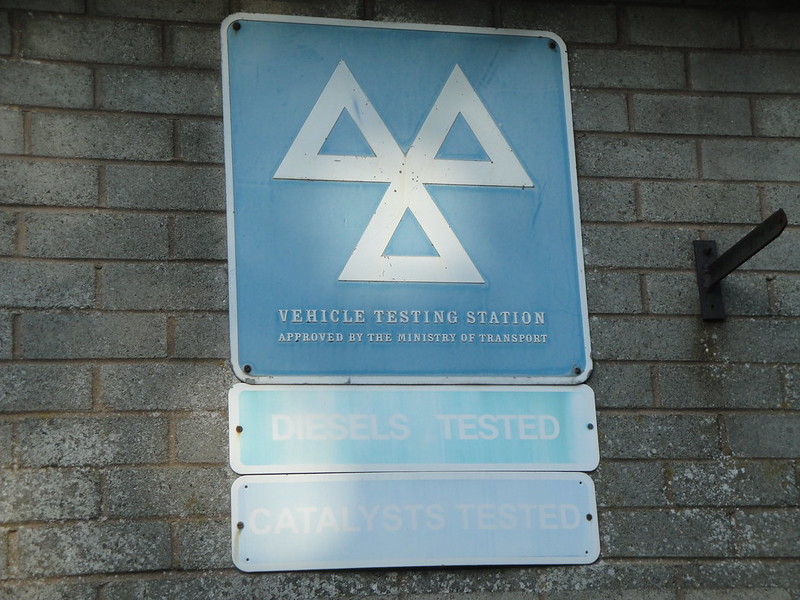
Why should I book an MOT now?
Of the 9 million tests the DVSA moved, nearly 3 million vehicles have since had an MOT and passed. However, they want to help increase that number and ease the burden on the industry as demand increases in the autumn.
Autumn tends to be the busiest time of year for MOT tests under normal circumstances, but this year DVSA are expecting demand to double in September, October and November. If your MOT is due this autumn, consider getting it done as soon as possible to avoid the rush and ensure your vehicle is safe and roadworthy.
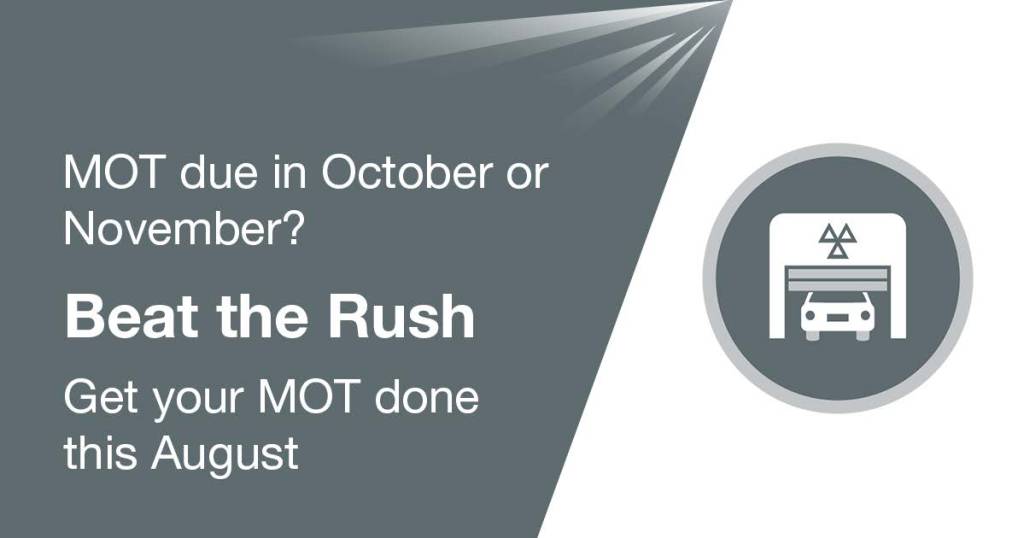
Using any vehicle with defects present on the highway, regardless of its MOT status, is an offence. You can be fined up to £2,500 – and be banned from driving and get up to 3 penalty points per defect for driving a vehicle in a dangerous condition.
It’s worth remembering that just because your vehicle has an MOT it doesn’t mean it’s safe or roadworthy. Always carry out regular vehicle checks – you can find out which in our “What to do when… your vehicle needs some TLC” blog post. If you want more complex items, such as suspension components, to be checked you can contact your local trusted garage and request some help.
How do I check a vehicle’s MOT expiry date?
To check the MOT status and MOT expiry date for your vehicle, you can use the DVSA’s MOT History service. If your vehicle was subject to an MOT extension throughout the UK lockdown, its MOT expiry date will automatically have been moved by six months.
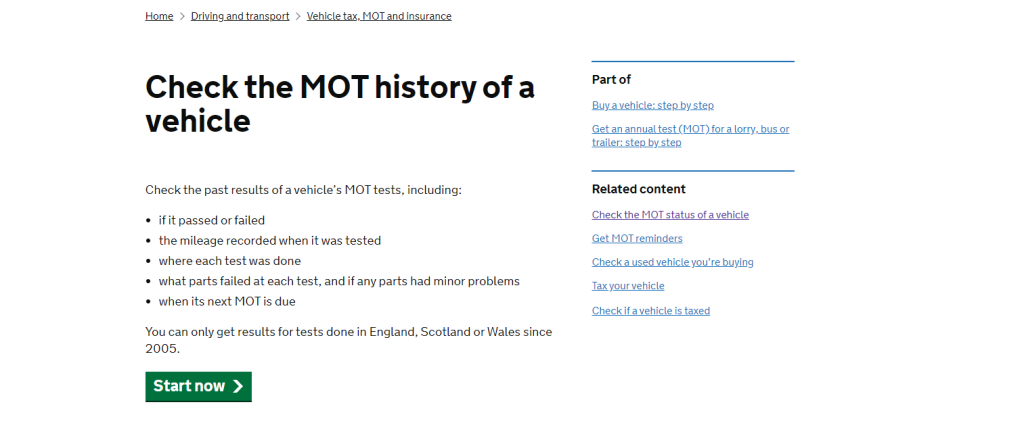
You can also use this webpage to check if there are any outstanding recalls on your vehicle. This service allows motorists to check for defects or problems reported by the vehicle manufacturer which can impede vehicle safety or performance. If a recall is noted within the service, it is best to contact your manufacturer’s nearest garage to arrange an inspection or repair.
How can I book an MOT?
To book an MOT, you must first locate an MOT station in your area and contact them to discuss their availability. An MOT test takes around 45 minutes, plus additional time if there are any advisories, minor or major defects which require further attention.
Some motorists opt to book an MOT along with a vehicle service within the same appointment, as this saves them a return trip to the garage at a different date. Be careful though, as not all garages are MOT stations, and not all MOT stations offer vehicle servicing!
To find a garage in your area, you can use the Trust My Garage “Find a Garage” search and locate your nearest TMG members! Each garage in our network adheres to a Chartered Trading Standards Institute (CTSI) approved Code of Conduct to ensure the highest levels of service and professionalism. You can even read reviews from other motorists about the members in your area to help you decide which garage is right for you. Try it out here:
Why use Trust My Garage?
Trust My Garage is a collection of Britain’s trusted local garages – each one different and all dedicated to the highest standards of skill and personal service.

Every garage in Trust My Garage are members of the Independent Garage Association, which is part of the RMI, one of Britain’s oldest motor trade organisations. IGA members are true professionals who must comply with a strict code of practice.
Every customer of all Trust My Garage members can rely on using a nationally recognised brand to help you and your vehicle get the best value service for you and your vehicle. If you want to find out more about Trust My Garage, visit our website, like us on Facebook and follow us on Twitter!

Planning a summer staycation? Get your vehicle holiday-ready with Trust My Garage
This year, global circumstances are affecting many UK residents’ plans for a summer holiday. Instead of waiting until the world is turning again, some people are opting for a stay-at-home holiday this summer – often referred to as a “staycation”.
Staycations are a great opportunity to explore parts yet unknown across the UK, and with a wide range of options on our doorstep, many are, or will be, driving to a new destination to get their summer break. If you’re taking your vehicle on the road to relaxation, these top tips from Trust My Garage will help make sure you get their safely and happily – read on to find out more!
Plan your route(s)
Before setting off on any journey it is worth checking the routes to your destination. Ideally, have a main route and a back-up option prepared in case of unforeseen delays like traffic or road closures. Many internet search engines offer mapping functions, providing travel times based on time of day, traffic and road incidents, so you can prepare well ahead for your trip. By doing a little homework beforehand, you could save a lot of time and avoid frustrations – which means more time for you to enjoy your holiday.

Check your fluid levels
Prior to making your trip you should check your vehicle’s fluid levels. You can check these yourself if you are comfortable doing so, or you can take your vehicle to a local garage and ask them to check that your levels are where they should be. Key fluids to check are:
- Windscreen wash fluid – windscreen wiper symbol on cap
- Brake fluid – black with hazard triangle with “!” on cap
- Power steering fluid – steering wheel logo on cap
- Engine Oil – cap with “OIL” or oil can logo, and yellow ended dipstick for checking the oil level is correct
- Engine coolant level – black with hazard triangle with “!” on cap
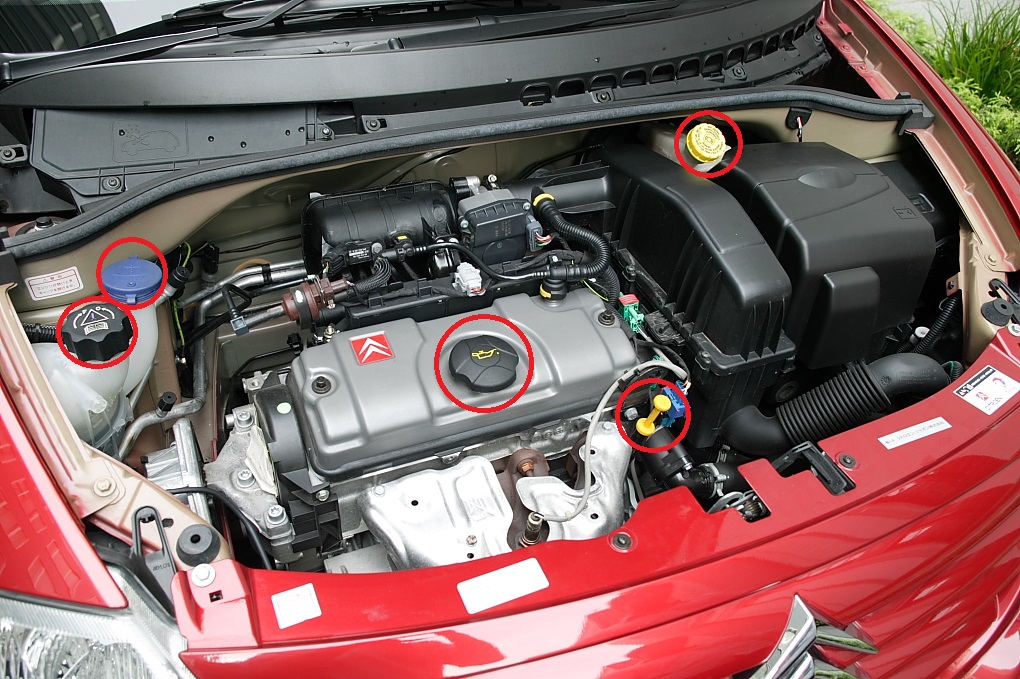
It is important to ensure your fluids are all within their required minimum and maximum markings, which are indicated with MIN MAX marks either on the side of their respective fluid tanks or, in the case of engine oil, the marked as lines near the end of the dipstick.
If you want to learn how to check your engine oil, watch this simple guide on what to do:
If you are unsure if your car needs any more fluids, or which fluids to use, call or visit your local garage. They should be able to assist and advise on what is best for your vehicle.
Check your tyres and lights
Tyres are a crucial element of keeping your vehicle safe on the roads, so make sure yours tread depths are well within legal limits before heading out! The 20p test is a simple and effective way to check your tyres have an adequate amount of tread to keep you safe on the roads – this is how you do it:

As well as checking your tread depth, you should also ensure your tyres are inflated to the correct pressure(s), as detailed in your vehicle’s Owner’s Manual. When travelling with a heavy load, such as baggage for a holiday, you may need to adjust the tyre pressures to ensure optimum tyre efficiency. Details of which weight levels require this should also be provided in your Owner’s Manual as an accompaniment to the pressure details.
While checking your running tyres, it’s good idea to also check your spare(if you have one) for any lumps, bulges or tears in case it is needed on your trip, or alternatively you can ensure you have a fully-stocked tyre repair kit in your vehicle in case of emergency. For more information on how to check your tyres, you can check out our “What to do when… you need to check your vehicle’s tyres” blog post here.
If your vehicle does require new tyres, you can contact your local garage to arrange a convenient time for you to visit them to fit new tyres to your vehicle.

Lights are equally important too, as a dim or non-functioning light can impair your view of the road or prevent another motorist from seeing your vehicle. If you have a brake light that isn’t working, you could be subject to any of the following:
- A £60 fine and three points on your licence
- A Vehicle Defect Rectification Notice – 14 days to fix the fault and provide proof of the fix
- Your car taken off the road immediately
An easy way to check your lights are functioning, while your vehicle is parked safely, is to turn them on (or depress the brake pedal) and look in any reflective surfaces around you to confirm lights are visible. Reflective surfaces can be the bodies of other nearby vehicles, shop windows or mirrors. If you are accompanied, you can also ask another person to step out and walk around the stationary vehicle to confirm all lights are functioning as normal.
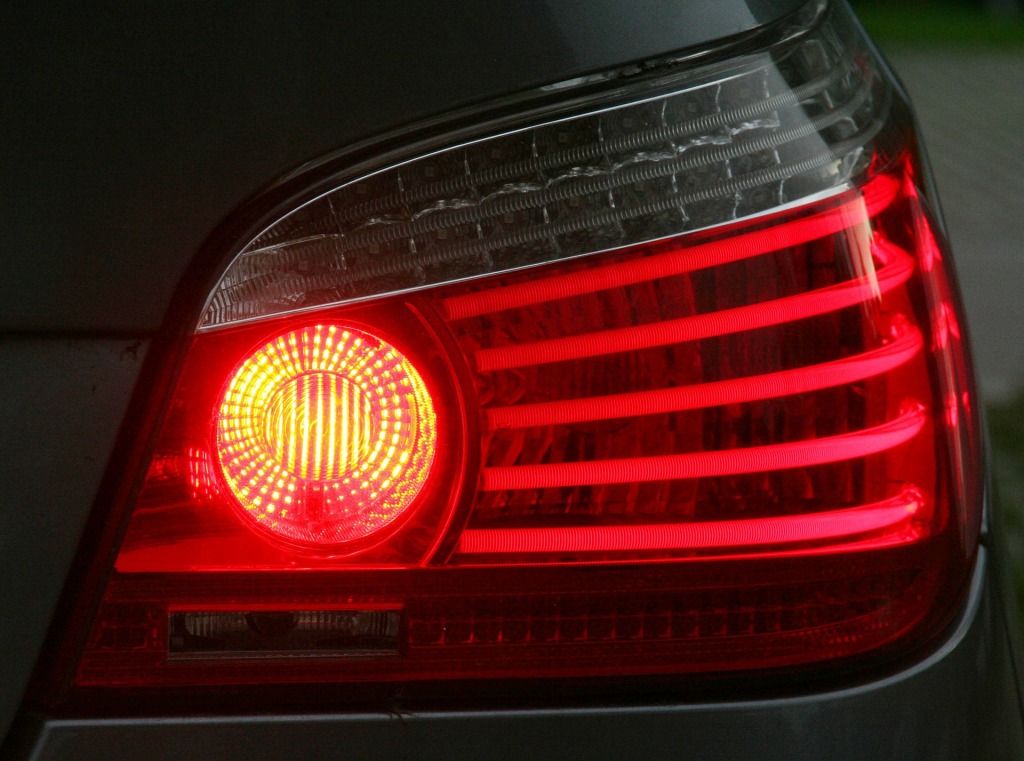
If you need a lightbulb replacing and are unsure which bulb type to purchase, or do not know how to fit a lightbulb to your vehicle, you can contact your local garage and arrange for the service to be carried out by them.
Check your vehicle’s tax, MOT and insurance
Before you’ve even left the house, you may need to check these three important documents are valid and have enough time left on them, to enable you to legally complete your staycation.
About a month before your road tax expires the DVLA will issue you with a V11 Vehicle Tax Reminder, containing the information you need to either renew your tax online, via telephone or at a Post Office branch, as well as the date your current road tax period will expire. You can also check the status of your road tax or renew it online via the Gov.uk website here.

If you are unsure of your vehicle’s MOT status you can use the Gov.uk MOT history checker to see when your vehicle last had an MOT, and the previous detailed information about that MOT. It’s worth ensuring that any advisory items noted at the last MOT are repaired, as these item may have deteriorated since the last MOT was carried out. As part of this service, you can also check if there are any outstanding recalls for your vehicle – where the manufacturer needs to investigate and potentially repair a problem with a certain batch of vehicles – and how to proceed if there is a recall problem. Find out more on the Gov.uk website here.
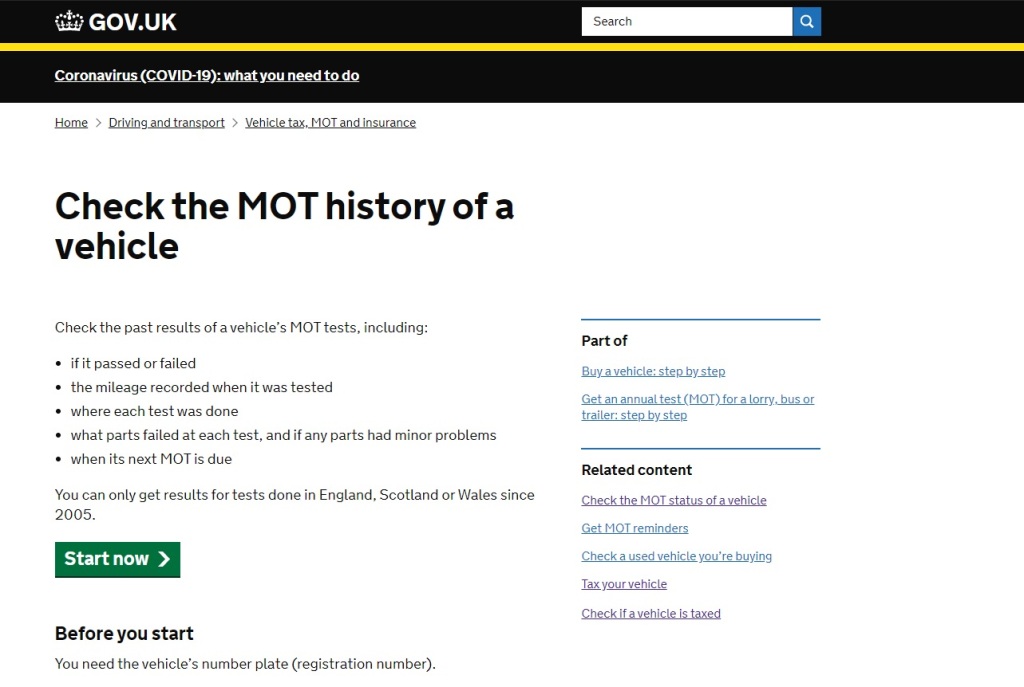
You may also need to check that your vehicle is still insured for use. Your insurance provider will send a reminder email or letter approximately a month before your policy is due for renewal, so you can choose to either renew with your current supplier, or with another provider depending on what suits you best.
If you aren’t sure when your insurance renewal is due, your existing policy documents will provide the correct date. Insurance providers often supply these via an online portal or paper format, depending on what you have requested, so you can check at your convenience.
Visit a local TMG member garage, if necessary
If you think your vehicle needs a professional touch, you can locate your nearest CTSI-approved Trust My Garage member by visiting the Trust My Garage website’s ‘Find a Garage’ map! You can even read reviews from other motorists about the members in your area to help you decide which garage is right for you. Try it out here:
Want to know more about Trust My Garage?
Trust My Garage is a collection of Britain’s trusted local garages – each one different and all dedicated to the highest standards of skill and personal service.
Every garage in Trust My Garage are members of the Independent Garage Association, which is part of the RMI, one of Britain’s oldest motor trade organisations. IGA members are true professionals who must comply with a strict code of practice.
Every customer of all Trust My Garage members can rely on using a nationally recognised brand to help you and your vehicle get the best value service for you and your vehicle. If you want to find out more about Trust My Garage, visit our website, like us on Facebook and follow us on Twitter!

What to do when… You’re maintaining your vehicle during lockdown
With the ongoing COVID-19 coronavirus pandemic affecting the UK, many motorists are making efforts to keep their vehicle in tip-top shape without breaking the social distancing measures set in place by the UK government. To help drivers, Trust My Garage has put together some advice on how you can stay within the guidelines and keep your vehicle at its best – read on to find out more!
With the implementation of a lockdown, it is best to use your car only for essential travel – such as food shopping, collecting a prescription, medical appointments or travelling to work if you are unable to work from home. By using vehicles less frequently than is the norm, many motors are left standing on driveways, in garages and parked on the roadside, leading to potential roadworthiness and safety issues.

Remember, many garages remain open for essential repairs, so if you have any concerns about your vehicle’s roadworthiness, get it checked out as soon as possible.
MOT status, tax and insurance – are you covered?
Without getting into your vehicle, you could be in violation of the UK’s motoring laws – but you can take simple steps to be sure you aren’t driving illegally.
MOT
Due to the pandemic, the UK government is extending car MOTs due from 30th March onward by six months on a 7-day rolling basis (so an MOT due on 1st April is now due on 1st October, and so on). Review dates are currently subject to a staggered implementation, and extended dates are being posted on the Gov.uk website here. To find out more on how the extension works, you can view our “The MOT Extension – how does it work and does it apply to you?” here.
Even if your vehicle’s MOT has been extended by the government, should you feel it is unsafe or unroadworthy take it to a garage as soon as possible for an MOT, repairs or maintenance. Your safety and the safety of other road users is paramount!

Tax
Although you may not be using your vehicle as regularly as normal, it is still subject to Vehicle Excise Duty (VED), commonly known as road tax. This is an annual tax that is levied as an excise duty and which must be paid for most types of vehicles which are to be driven or parked on public roads in the UK.
About a month before your road tax expires the DVLA will issue you with a V11 Vehicle Tax Reminder, containing the information you need to either renew your tax online, via telephone or at a Post Office branch, as well as the date your current road tax period will expire. You can also check the status of your road tax online via the Gov.uk website here.

Insurance
During lockdown, you may also need to check that your vehicle is still insured for use. Your insurance provider will send a reminder email or letter approximately a month before your policy is due for renewal, so you can choose to either renew with your current supplier, or with another provider depending on what suits you best.
If you aren’t sure when your insurance renewal is due, your existing policy documents will provide the correct date. Insurance providers often supply these via an online portal or paper format, depending on what you have requested, so you can check at your convenience.
Tread carefully when it comes to tyres
You should check your tyre pressures at least every two weeks – and if your vehicle has a spare, check that too! Under inflated tyres increase fuel consumption and reduce vehicle handling, and they also lead to increased tyre wear, which means your tyres may require replacing sooner than you expect.
The legal limit for minimum tread depth in the UK is 1.6mm across the central three-quarters of the whole tyre, however it is recommended to keep your tyres at 3mm or above for optimum grip. Drivers who fail to comply with the regulations face a fine of up to £2,500 and three penalty points for each illegal tyre. You should also look out for cuts or wear anywhere on the tyre and replace them if you can see tears or bulges.
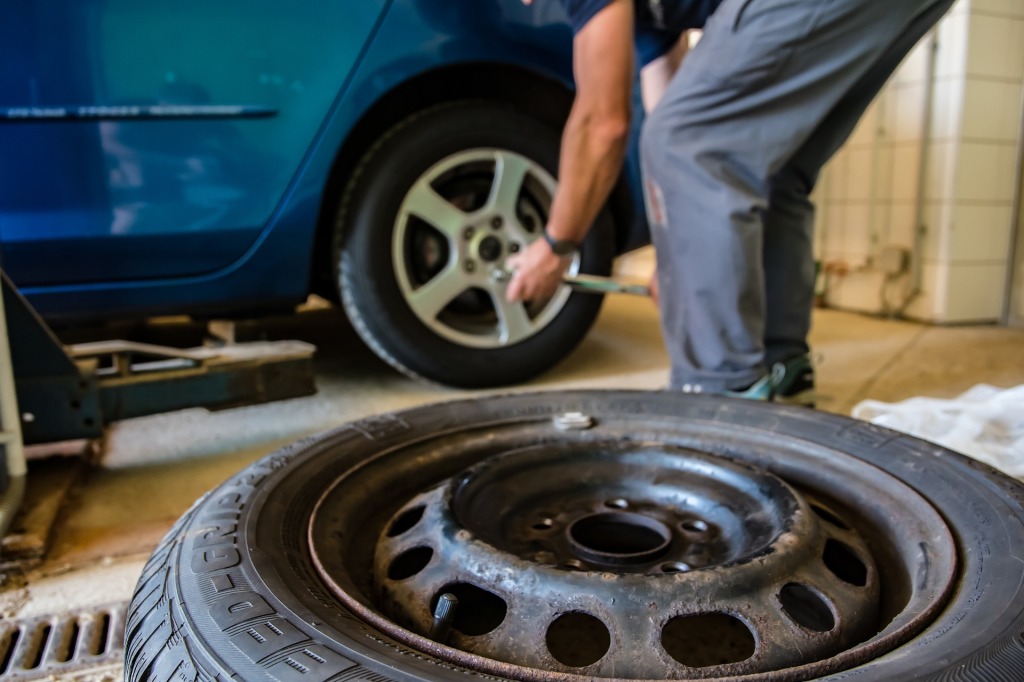
If a vehicle stands for an extended period of time, flat spots may occur on your car’s tyres. These happen when a vehicle’s wheels have not rotated for a long period of time and the downward pressure from the body causes the tyres to become misshapen where they contact the road surface.
When a car has a flat spot on one of its tyres, this can lead to symptoms such as vibrations on the steering and inconsistent handling, because the wheel is unbalanced. If flat spots do occur on your tyres, they may rectify themselves as the vehicle is brought back into use; however this may take some time. If you are unsure whether the vibration you are encountering is a tyre flat spot or something more serious, contact your local garage.
Batteries and brakes – are they roadworthy?
When a vehicle is not used for a prolonged period of time there is a risk of the battery power draining to a point where there is insufficient charge to start your car. If you find your car has a flat battery you have a number of options:
- Charge it using the correct type of external battery charger
- Jump start the car using jumper leads connected to another vehicle or battery.
Before using either option it is always advisable to consult your vehicle handbook to ensure you connect any cables correctly, as so incorrect use could cause damage to your vehicle’s sensitive electrical systems.

If there are two cars in your household, you may want to consider alternating your essential trips in them. You should also be mindful that repeated short journeys will flatten your battery faster than usual, which is even more reason to follow the government’s guidance to shop for necessities as infrequently as possible. You should also avoid turning your engine on only to turn it off again shortly after.
Another issue that can occur when vehicles are left unused for long periods is brake seizure or sticking. This makes it difficult to get the vehicle rolling after not being used. If your brakes do stick or seize on this may not be as easy to resolve as a flat battery, so contact your local garage and arrange for a vehicle check prior to undertaking any travel after prolonged periods without use.
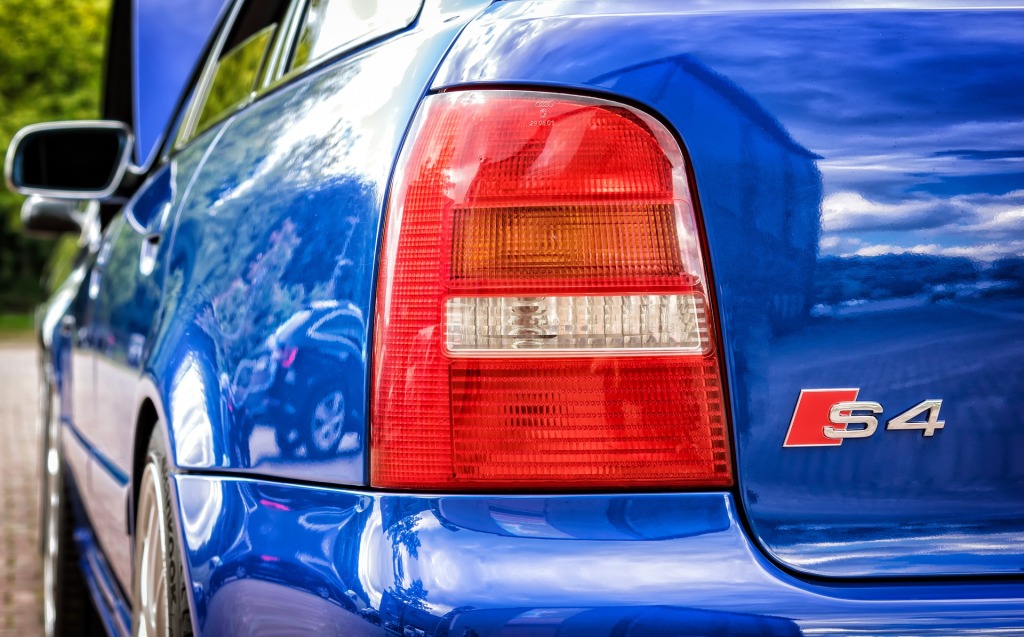
Working brakes should have a foot pedal that feels firm throughout its working travel, getting firmer the more you push down on the pedal. If you notice that the brakes feel spongy or slack, and perhaps the car appears to be taking longer to slow down or stop, you likely have air in the brake lines. If this is the case, take your vehicle to a garage to have it inspected!
Keep things fluid
You should check fluid levels to keep your engine well maintained and have your car ready to drive when you need it. Top up your:
- Oil: Make sure your engine oil level is showing between the minimum and maximum marks on the dipstick. If your vehicle doesn’t have a dipstick consult the handbook on how to check your engine oil level electronically. Details of the correct oil type and grade will also be noted in your handbook.
- Coolant: The coolant level in your vehicle should be between the minimum and maximum marks on the water tank in the engine compartment. If you need to top up your coolant, you must do so as per the vehicle manufacturer’s instructions.
- Windscreen wash: A clear view of the road is vital. A dirty windscreen combined with low Spring sunshine can make visibility difficult. If your washers aren’t working correctly your view of the road ahead can be severely impaired, so top up your screen wash and check you wiper blades for dirt or trapped debris
Take a long, hard look
Prior to setting off on any journey, it’s always good to visually inspect your vehicle for any issues, such as dirty or broken lights or tyre inflation, and ensure your front and rear number plates are clearly visible.
Not sure how best to care for your car?
Our ‘What to do when…’ series can provide some further tips and insight across other areas of motoring and vehicle maintenance to help you ensure your motor is running at its best! You can check out our other posts in the series here.
If you’re looking for a professional local garage to help give your car some TLC you can find a local CTSI approved Trust My Garage member by visiting the Trust My Garage website’s ‘Find a Garage’ map! You can even read reviews from other motorists about the members in your area to help you decide which garage is right for you. Try it out here:

Want to know more about Trust My Garage?
Trust My Garage is a collection of Britain’s trusted local garages – each one different and all dedicated to the highest standards of skill and personal service.
Every garage in Trust My Garage are members of the Independent Garage Association, which is part of the RMI, one of Britain’s oldest motor trade organisations. IGA members are true professionals who have to comply with a strict code of practice.

Every customer of all Trust My Garage members can rely on using a nationally recognised brand to help you and your vehicle get the best value service for you and your vehicle. If you want to find out more about Trust My Garage, visit our website, like us on Facebook and follow us on Twitter!
Don’t forget: If you can think of any more top lockdown maintenance tips, leave us a comment in the box below!
Road Safety Week 2019 – How you can stay safe on the UK’s roads
This week (18-24 November) is Brake’s Road Safety week – the UK’s biggest road safety event. This year, Brake want everyone to “Step up for Safe Streets” and learn about, shout about and celebrate the amazing design-led solutions that will allow us all to get around in safe and healthy ways, every day. Want to find out more? Read on!

What is Brake?
Brake are a road safety charity based in the UK, who’s ethos is improving road safety for everyone. They work with communities and organisations across the UK to stop the tragedy of road deaths and injuries, make streets and communities safer for everyone, and support people bereaved and seriously injured on roads.
Brake’s vision is a world where everyone moves without harm. They believe that mobility without danger is everyone’s human right wherever we are; in cities, towns, villages or moving between places.

What is Road Safety Week?
Road Safety Week has been running since 1997 and aims to raise awareness for all road users, including motorists, on how they can use the UK’s road network to travel safely without negatively impacting any other users.
Every year, Brake organise a week where they raise awareness about the impact of road safety and the issues carelessness on the roads can cause. Across the world:
- Every 24 seconds someone is killed on a road
- More than 1.3 million people die on the roads every year
- Road crashes are the leading cause of death for young people aged 5–29
In Britain alone, someone is killed or seriously injured every 20 minutes. Motorists and other users can sign the Brake Pledge, designed to highlight how to protect themselves and the people around them on the roads. Although it’s only one week of the year, motorists should use the advice from the Pledge year-round!
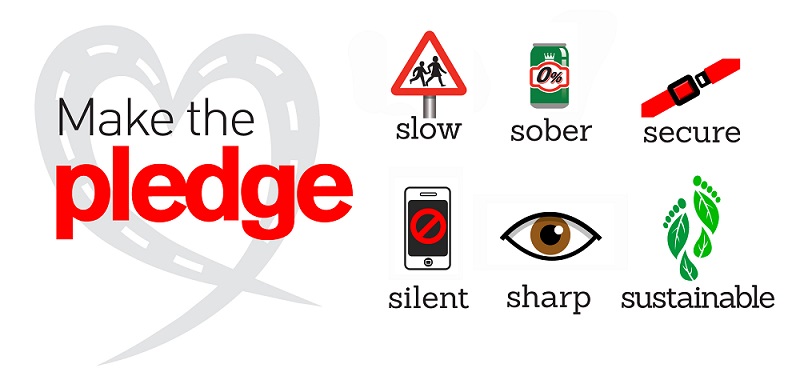
How can you help?
You can sign the Brake Pledge and commit to being a safer driver! You can also donate to Brake to help them support people bereaved or seriously injured and deliver road safety activities to educate people and raise awareness about road safety in all generations.
Whilst Brake provides guidance and support for road users, an important part of avoiding accidents is ensuring your car is in good order and that’s where your local Trust My Garage member can help. Trust My Garage is a collection of Britain’s best local garages – each one different and all dedicated to the highest standards of skill and personal service.
If you take your vehicle for an MOT, service or repair at your local garage, how can you be sure of the quality of its work? At Trust My Garage, we believe that our members are the best independent garages in the UK, each one unique but all skilled professionals who are dedicated to providing top quality work. Find out more by watching our TV ad:
By using a TMG-approved member, you’re visiting a garage that adheres to a CTSI (Chartered Trading Standards Institute) approved Code of Conduct. Our code means that you and your vehicle get the best service possible, no matter which TMG member you visit – so excellent service is on your doorstep!
With over 2,900 members across the UK, you’re never far away from a TMG member. We’ve even created a handy search function so you can locate your nearest TMG-approved garage with ease!
Simply pop in your postcode and our ‘Find a Garage’ map will show you all the TMG members in your area – and you can even read reviews from other customers if you’re unsure which garage is right for your needs.
If you’re looking for more information about Trust My Garage, you can head over to our website, TrustMyGarage.co.uk. We’re also on social media, so check out our Facebook and Twitter profiles and you can get the latest motoring news and updates straight into your social feeds!
Got a top road safety tip? Like our TV advert? Make sure to leave us a comment in the section below!

Don’t get spooked about vehicle maintenance this Halloween with Trust My Garage
October 31st is coming and it’s the spookiest day of the year – Halloween! Not only is it time for ghouls and ghosts to make an appearance, it’s also time to prepare your vehicle for the upcoming cold winter months. Want to know how? Find out with the Trust My Garage blog by reading on – and for a little bit of fun, don’t forget to count up our spooky puns throughout this post and leave us a comment with how many you can find!

Beware the witchy weather
The onset of autumn and winter means poorer road conditions for motorists – summer showers have given way to winter whirlwinds! Low winter sun can dazzle unprepared drivers, and heavy rain and fog can create slippery roads and reduced visibility.
In wet conditions allow additional travel time and drive at a speed appropriate to the conditions, be aware that braking distances can double on wet roads and increase tenfold on ice!
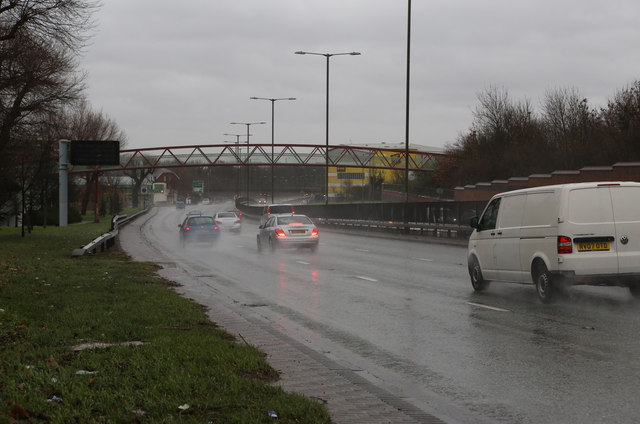
Avoid a fright at night
It’s important for drivers to take it steady when driving in the dark, especially if you’re driving in an unfamiliar area.
Broken or faulty lights can result in a £50 fine, three penalty points and even a Roadside Prohibition Notice – which means you must fix the fault before a re-inspection – so be sure to take the time to walk around your vehicle and check all your lights are functional before setting off on any trips.
If you’re new to driving it may be worth practicing your evening driving in a familiar area before heading off on longer trips – getting hours of practice under your belt may help with your confidence and help you get used to driving in poor lighting!

Don’t let your wheels be tyre-rifying
With poorer driving conditions on their way it’s important to ensure your tyres are up to the challenge – so be sure to check your tyre pressures and tread depth regularly. The legal minimum for tread depth is 1.6mm, but tyre grip can deteriorate rapidly if the depth is under 3mm.
You can use the edge of a 20p coin to check how deep your tread is – if the outer band of the coin is visible, then your tyres may be illegal and unsafe and should be checked immediately by a qualified tyre professional. Illegal tyres can earn you three penalty points and a fine of up to £2,500 per tyre!
For the correct tyre pressures for your vehicle consult your Owner’s Manual or look for a tyre information sticker which could be located on one of the door pillars or inside the fuel flap. One of these should contain the information you need for your tyres to be inflated to the correct PSI/BAR. Air and water machines are commonplace at petrol stations across the UK – or you can ask your local Trust My Garage member to check your pressure is correct, if you’re unsure of how to do this yourself.
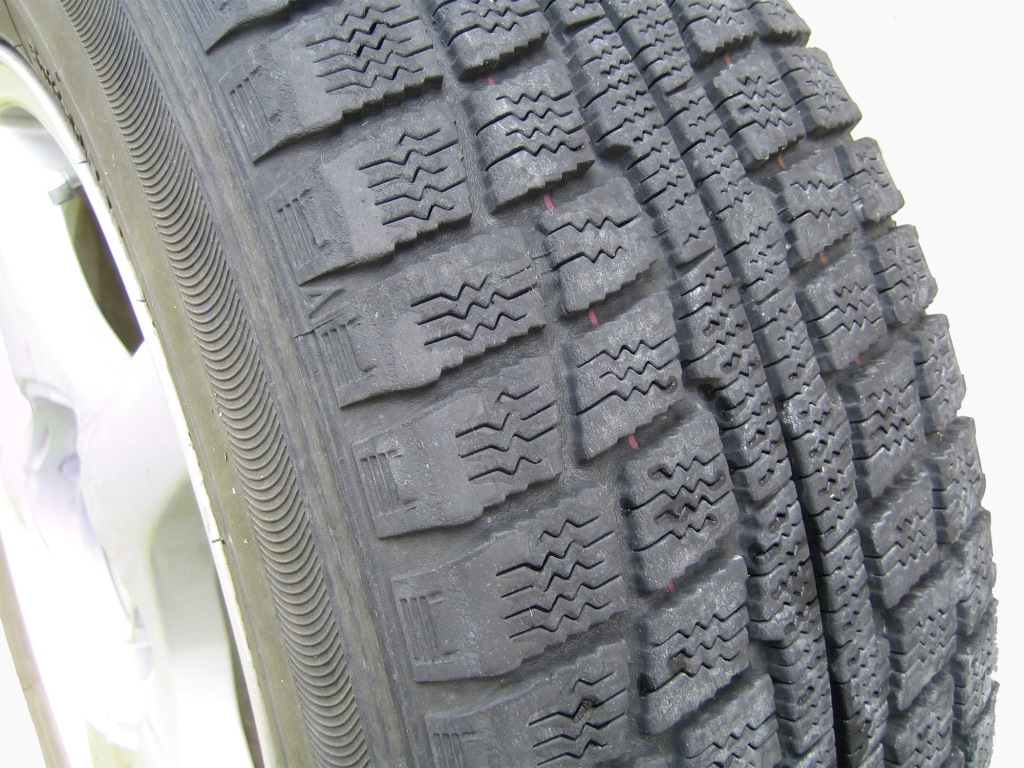
Keep your bat-tery flying
On average, car batteries last up to 5 years (source), but there are many reasons that a battery could require replacing sooner than this.
Heading into colder weather can cause strain on your battery, as can short repetitive journeys – with lots of stopping and starting of the engine which can drain a battery’s power without giving it enough time to recharge fully. Also; the use of a heated rear window, lights and wipers all add to the load placed on a battery. Taking your car out for a longer drive at the weekend can be a key factor in combating battery drain, as can recharging your battery at home or at a local garage. If you are concerned about the condition of your battery your friendly TMG member could always check it out for you!

Take a trip to the fuel pump-kin
Running out of fuel is one of the most common causes of breakdown on the UK’s motorway network, so check you’ve got enough fuel for your trip and take note of any available fuel stations en-route to fill up as necessary. It’s also wise to allow sufficient fuel to be able to accommodate any delays that may occur on route.
If you aren’t sure of places to fill up on y our trips, you can use an internet search engine to locate nearby fuel stations or ask a local in the area where the nearest fuel station is. Some modern sat navs also highlight close by fuel stations but you may need to turn this function on in your model’s settings where possible!

Avoid an MOT horror with Trust My Garage
If your car is due its MOT or a service, make sure to take it in to a garage to keep it roadworthy. If you’re looking for a reputable, local, independent garage you can rely on, head to the Trust My Garage website and use our handy ‘Find a Garage’ map to locate your nearest TMG member, operating to a Chartered Trading Standards Institute (CTSI)-approved code of conduct.

Simply pop in your postcode and our ‘Find a Garage’ map will show you all the TMG members in your area – and you can even read reviews from other customers if you’re unsure which garage is right for your needs.
Trust My Garage truly is the independent scheme for independent garages in the UK. They have each signed up to treat customers and their vehicle with respect, which means they really do exist to ensure that independent garage standards are continuing to improve.

If you’re looking for more information or would like to contact Trust My Garage, please visit TrustMyGarage.co.uk or Contact Us here.

Feeling the drag? Step up your car’s performance with Trust My Garage
If you’re hitting the UK’s roads, it’s important to ensure your vehicle is performing well when you need it to – so check out our top tips on how to optimise your motor with Trust My Garage! It could even help with your safety and running costs; find out more by reading on.

Does your vehicle contain everything but the kitchen sink?
If you like to travel with all your personal possessions in your car, you’re out of luck! Gym bags, books and unnecessary tools might not weigh much individually but the grouped effect adds up quickly, and will affect your car’s fuel efficiency as it means the extra weight will cause you to burn more fuel to achieve your car’s usual level of performance.
It’s a simple matter of cleaning out any unnecessary items from your vehicle, as well as any rubbish that you may have accumulated over time since your last clean. By losing the extra items you can gain some performance – and maybe even go further between fuel station trips!

Air-con giving you a frosty feeling?
Did you know that when you use your car’s air-conditioning it could raise your car’s fuel consumption by as much as 8-10%? (info)
In hot weather it’s understandable to have the air-con running, and at high speeds it’s better for performance than opening a window for a breeze, but if you leave you air-con running most of the time when you’re driving it can impact performance and economy without you even realising!
If you want to utilise your air-con effectively, you should run the system once a fortnight for five minutes to make sure the system remains free of issues – but if you suspect there’s a problem with your air-con or it doesn’t feel cold anymore you can take your vehicle to your local Trust My Garage member for a check or re-gas service!

Racking up the boxes on your motor’s roof?
If you use roof racks and/or boxes on your motoring trips be sure to remove them in-between journeys. By leaving them in place you affect the aerodynamic design of your vehicle, which then increases drag and affects performance, including fuel consumption!
The easiest solution is to remove your roof equipment whenever it is not in use, but if this is impractical there are many types of lightweight options – although the faster you travel, the more this will impact your vehicle’s performance.
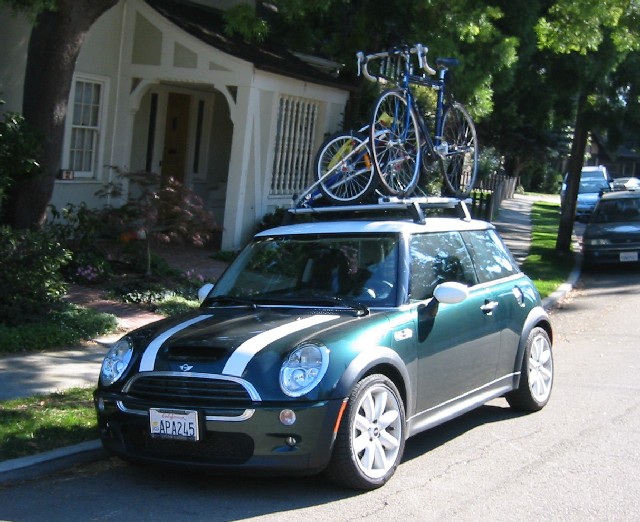
Is your motor feeling tyre-d?
Correct tyre pressures are important in order to stay safe on the road. If your tyres are under/over inflated then handling and grip will worsen, potentially causing irregular or unpredictable car wear as well as affecting handling behaviour. Tyres that aren’t fully inflated are also more likely to suffer from a sudden rapid deflation and will suffer premature wear on the outside edges of the tyre, meaning the wheel rim and tyre will be more susceptible to impact damage.
Checking your vehicle’s tyre pressure is easier than you might think! You can check and correct your tyre pressure at most UK petrol stations using a pay-per-use air and water station, or you can purchase your own tyre pressure gauge – the choice is yours.
If you aren’t sure what pressure is correct for your vehicle’s tyres you can refer to your Owner’s Manual. On many vehicles there is also a label on either the door pillar or inside the filler flap that provide tyre pressure information. Details should be provided in either/both BAR and PSI, and you can adjust your pressures to the recommended figure.
The tread of a tyre refers to the rubber on its circumference that makes contact with the road or ground. The legal limit for minimum tread depth in the UK is 1.6mm across the central three-quarters, however it is recommended to keep your tyres at 3mm or above for optimum grip. Drivers who fail to comply with the regulations face a fine of up to £2,500 and three penalty points for each illegal tyre.
Tread depth is important to maintain good grip on wet roads but, as the tread wears down, the tyres will lose the ability to grip well. The ‘20p test’ is a quick way to check the tread depth. Place a 20p coin into the main tread grooves at three points across the tyre and then repeat around its circumference. If the outer band is visible, the tyres may be unsafe or illegal and need to be checked by a professional garage or tyre specialist.

Bad performance? Not with this economy!
The best way to improve the performance and efficiency of any vehicle is to drive with economy in mind.
Looking further ahead when driving and ensuring keen observation can help you spot any potential hazards or traffic fluctuations earlier in your journey – giving you time to anticipate and use brake or accelerate at a gentler pace. This style of driving doesn’t affect your vehicle’s fuel economy in the same way that sharp braking and accelerating does, and it can also help minimise the wear on your tyres too!
Also, dropping your cruising speed by a few miles per hour will make a huge difference to your fuel costs and won’t add too much extra time to your journey. As an example, a journey of 100 miles driven at 70mph will take you 86 minutes, while driving at 60mph would only add 14 minutes to that time and you will use 10% less fuel.
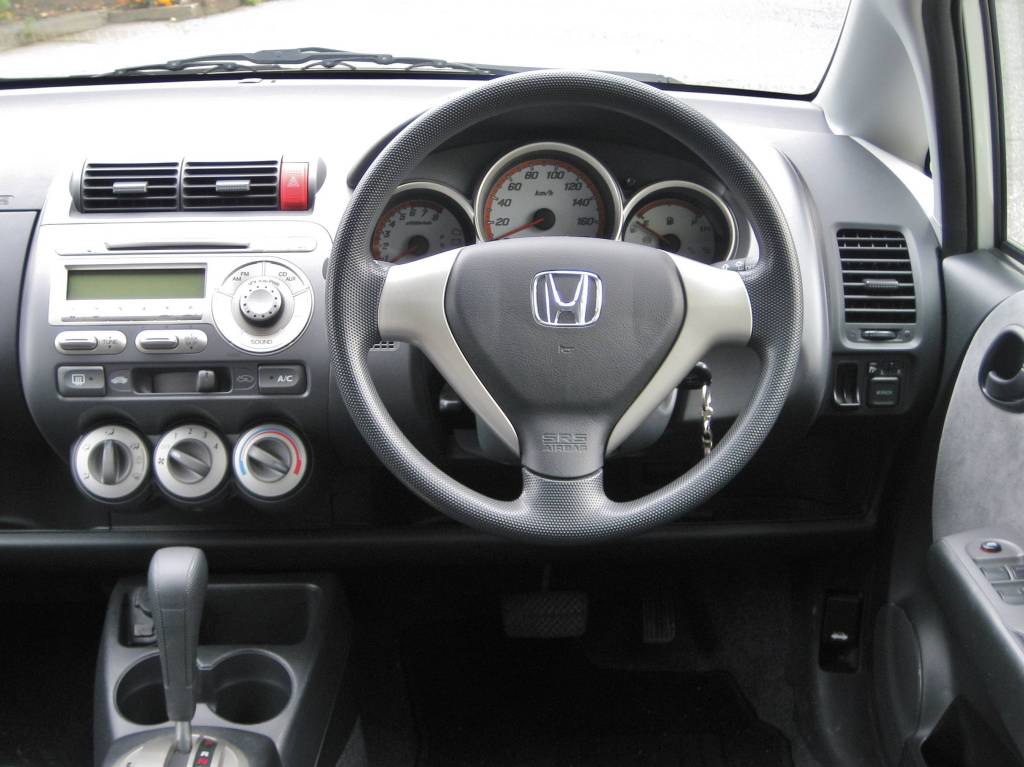
Why you can Trust My Garage to take care of your servicing and MOTs
Another great way to ensure your vehicle is performing at its best is by keeping up with your yearly MOT requirements and ensuring it’s serviced regularly.
For a professional garage experience, you can find a local CTSI approved Trust My Garage member by visiting the Trust My Garage website’s ‘Find a Garage’ map! You can even try it out here:

Every garage in Trust My Garage are members of the Independent Garage Association, which is part of the RMI, one of Britain’s oldest motor trade organisations. IGA members are true professionals who have to comply with a strict code of practice, so they can help you motor on happily and safely.
Each and every customer of all Trust My Garage members can rely on using a nationally recognised brand to help you and your vehicle get the best value service for you and your vehicle – and you can find out more by visiting us at TrustMyGarage.co.uk or checking out our Facebook and Twitter pages!












